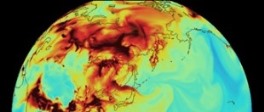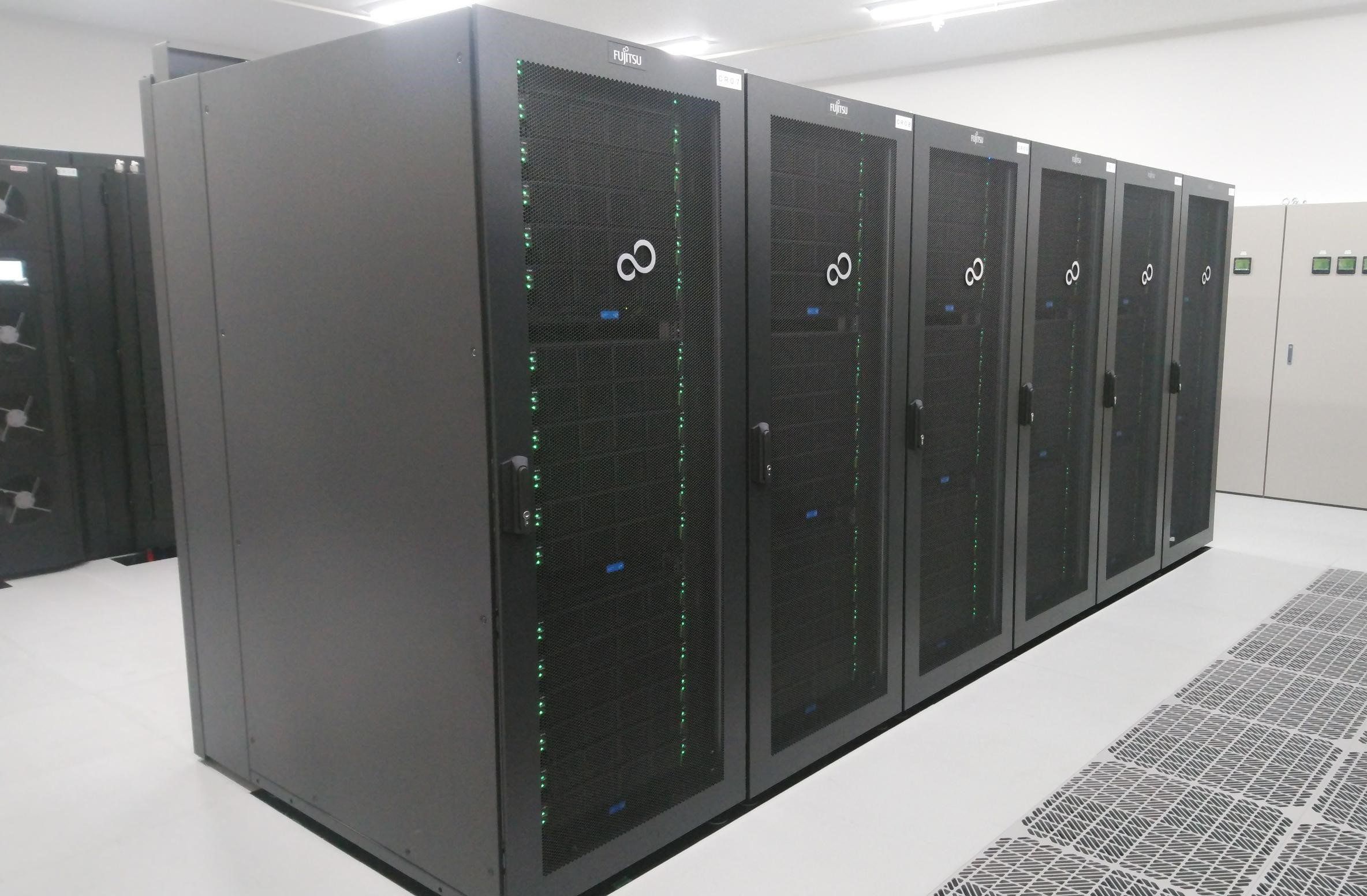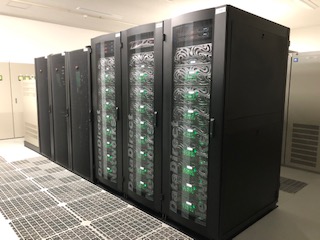Supercomputer System
The Meteorological Research Institute (MRI) supercomputer system is currently operated for numerical studies on atmospheric, oceanic, seismic and volcanic phenomena using various numerical models/systems. The models and systems used help to clarify the details of atmospheric disturbances such as torrential rainfall events and typhoons as well as seismic and volcanic phenomena such as earthquakes and eruptions. They also support the improvement of numerical prediction and the clarification of climate change.
 |
 |
| Tornado Simulation | Ocean Simulation around Japan |
 |
 |
| Volcanic Ash Forecast | Tsunami Simulation |
 |
 |
| Global Warming Simulation | Carbon Dioxide Simulation |
Systems
Start Operation on March 2020
FUJITSU PRIMERGY CX2550M5
Storage System
History of Systems

| Theoretical Peak Performance | 2.81 PFLOPS | |
|---|---|---|
| Number of Nodes | 880 node | |
| Total Main Memory | 220 TiB | |
| Node Performance | CPU | Intel® Xeon® Gold 6248 (2.5 GHz,20core) × 2 |
| Main Memory | 192 GB DDR4 384 GB DDR4 | |

| Storage Capacity | 16.53 PB |
|---|---|
| Storage Capacity (RAID6) | 15.38 PB |
| Component | MDS:4 Lustre OSS:3 OST:24 |
| Start Operation | Machine | Theoretical peak performance | Total Main Memory | Total Storage |
|---|---|---|---|---|
| 1980 | HITAC M-200H | 48 MFLOPS | 16 MB | 0.8 GB |
| 1985 | HITAC M-280D & S-810/10 | 630 MFLOPS | 128 MB | 80 GB |
| 1994 | HITAC S-3800/180 | 8 GFLOPS | 1 GB | 116.8 GB |
| 1999 | HITACHI SR8000 | 288 GFLOPS | 256 GB | 859.2 GB |
| 2004 | NEC SX-6 Type E | 2894 GFLOPS | 3328 GB | 50.56 TB |
| 2009 | HITACHI SR16000 Model L2 | 72.7 TFLOPS | 11.3 TB | 306.6 TB |
| 2015 | FUJITSU PRIMEHPC FX100 FUJITSU PRIMERGY CX2550M1 | 1268 TFLOPS | 71.75 TB | 5.49 PB |
